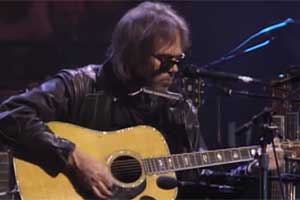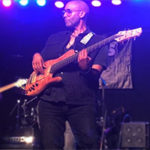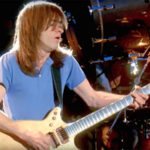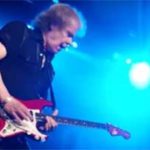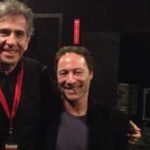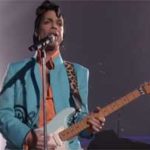Rock legend talks new live album, Promise of the Real and the art of the jam
By Gary Graff
June 17, 2016
Neil Young is a tough one to pin down — and he’d have it no other way. The Canadian-born artist has been confounding fans and defying expectations since the mid-60s, when he and his band the Mynah Birds (featuring a young Rick James) came across the border to audition for … Motown.
Since then Young has been an acoustic troubadour and electric gunslinger, a band member and a bandleader and an iconoclastic artist whose endeavors also include political and social activism, directing movies, writing books, inventing model train technology, creating an environmentally conscious automobile (LincVolt) and, most recently, spearheading a new digital audio technology, Pono, that he feels best replicates the aural experience of the heyday of vinyl.
He does a lot, in other words, and does it his own way — sometimes to a fault, but by the time judgments are being rendered Young is usually on to the next idea or two. Or more.
The occasion for this chat is the release of Earth, a new live album from the two-time Rock and Roll Hall of Famer’s electrifying 2015 tour with Promise of the Real, the band led by Willie Nelson’s sons Lukas and Micah; rather than a traditional concert set, however, Earth mixes the performances with collages of sounds, including insects and city street noises, in an effort to make a larger sonic point.
You may applaud. You may scratch your head. You may do both. But that’s the point; this is, after all, the guy who declared that rust never sleeps, and for more than 50 years he’s been doing his best to make sure that none gets on him.
FGPO: Earth is obviously intended as more than a standard issue concert album. What was your approach here?
Young: It’s just reaching out farther. Do you remember Bram Stoker’s Dracula? Do you remember the bat flying through the old city and how the bat was kind of flittering around and you had the POV of the bat, you really didn’t see the bat? Well that’s what this record is. When I started seeing this taking shape, that’s what it sort of reminded me of and that really was the driving force behind, the idea that you could just fly around anywhere on Earth and listen to things and be there, and all you had to do was close your eyes and listen. And you could go from one place to another and experience what it was like on the planet, not just the songs about the planet and living on the planet and man’s place on the planet and what he’s doing and what he isn’t doing and all those things. That’s one thing. But to actually be able to leave that behind and keep it in perspective by leaving it in one place and going out and checking out the entire breadth of areas of the planet, that’s what was so cool.
FGPO: So what was the process of putting these sonic collages together like? It’s almost like its own kind of songwriting in a way.
Young: Well yeah. I mean, it was a record-making decision. I said: “We’re not gonna have any rules or anything with this. We’re just going to abandon them and do whatever comes to mind.” So these things would come to mind and I’d say: “OK let’s do a breakdown. Let’s strip out of the song right here and go somewhere, audibly, into an environment or be somewhere while the beat keeps going and then come back to the song. And with the audience, we always feel like we have a herd of animals and different kinds of animals, the sounds they would make, especially when they were just hooting and hollering. So I always wanted to put ambience on the live recordings when I heard them over the years.
So when I got to this, I chose all the songs based on the performances. I then started mixing in the audience and just — I guess for most people it would be something different — but I tried it and I liked what happened and then I liked the environments the animals came from and decided to just have them be there and then fade out of the arena or wherever you first heard them. And it was like you went to where they were, and then you can go from there to any kind of event on the planet. And so that’s just basically what we did. It took us about four months of work in the studio to put together these songs and do everything and make these transitions. The transitions took a long time. But it was really fun. I had a good time doing it. It was one of the best times I had in the studio in years.
FGPO: Talk about Promise of the Real and what they brought to the party as your touring band. It seemed like a great fit.
Young: It was fantastic. They’re great players. They’re seasoned way beyond their years. There’s nothing different except I really enjoy playing with them and there’s no barriers. They’re a completely unique organization. They’ve got the Nelsons, who have an incredible history and have just grown up in a fantastic musical environment. Then the people they like to play with are the same way, the same sensitivity. These guys are all first-class musicians that are just regular people that play really great and are very open and capable of improvising and have absolutely no fear.
FGPO: It does have the same guitar army attack that’s been so much a part of your musical history, from Buffalo Springfield on. How does that communication work with this band?
Young: It’s just natural. It’s natural. Everybody has the sensitivity to listen to everybody else and play music together, and there’s no second thoughts. There’s no fear. You just do whatever comes naturally to you. Some nights the songs are really long, sometimes they’re not. Sometimes we don’t even play the songs; we play something else. We have a huge repertoire, I’d say maybe three or four times more songs with this one band than I’ve ever known with all the bands I’ve played with. That’s 100-plus songs currently and growing that I can choose from at any time. So the freedom to be able to design a show and an appearance and have it be: OK, I might play a few acoustic songs by myself and then I’ll bring out the band and we’ll play acoustic for a while, and then I’ll bring out a different guitar and we’ll play a few songs with that and then we’ll rock out for a couple hours.
That’s the design of the show. The shows themselves, although we ended with “Love and Only Love,” we didn’t always end with “Love and Only Love.” And, although we usually began the acoustic set with “Out On The Weekend,” sometimes we didn’t and usually there’s a certain amount of songs in the acoustic set, but not every night. So every part of the show had a different aspect that’s changeable. We had more songs to do than we had time to do. And the songs are all good and the band plays them really well and they all sing ’em and they know ’em. It’s not like they’re struggling to remember them.
FGPO: It’s a really epic version of “Love and Only Love” on Earth. Do you feel like mad scientists or raiders from the last ark? How does something like that get constructed — or deconstructed.
Young: You just do it. You just start and go, and when you know it’s time to stop. When you stop, and it doesn’t stop, that means the stop is now part of the presentation and it’s gonna start again. It’s gonna get wound up and go again. You really don’t know what’s going to happen until it happens, and because everybody has the confidence and the ability to play we just sense when the right time to do it is and when it isn’t. So there`s nothing about it that’s planned. That’s from one show; when we recorded that one, that was the longest we’d ever played it.
FGPO: Do you foresee working with Promise of the Real as a going concern?
Young: Well, it’s always fun to play with them, and they have a life. I’ve helped them on some of the things they’ve done and some of the things Lukas did. I just like playing with them. They’re great. As long as I get to play with them I’ll be happy. We’re just gonna follow our muse, just follow along and see where it goes.
FGPO: Earth is well-suited to being heard in high-fidelity — and on Pono, of course. Did you engineer it in any way with the player in mind?
Young: No. That’s exactly what I do with every record. I record it like that and I mix it like that. Every one of them sounds like that if you listen on that device or any other hi-res device. They all sound different; we like ours, but it doesn’t have to be ours. It’s just the fact that the file it’s coming from is the best that you can get and it’s on a par with what vinyl used to be which is what everybody used to get. The way to look at that file and the way this record sounds is it’s normal. It’s the way things were in the ‘60s, ‘70s; when I was making records, that’s what everything sounded like.
So there’s nothing, I just never stopped doing it, but people stopped hearing it because Apple came along and degraded the quality of the sound to be less than five percent of what it is now, of what it can be and what it was and what Pono is. So that’s just the way that went so people today listen on that and a lot of people, especially older people, they don’t listen to it much, ’cause they think they’re losing their hearing, ’cause they can’t hear music the way they used to and they stop listening to music or they go: “God, I wish they’d make music like they used to” when actually it’s a technical problem. It has nothing to do with the people or the music. It’s the technology. The technology is only delivering five percent of what people got when music was really rockin’. It doesn’t have anything to do with the music; it’s the technology.
So I address that with Pono, and I’m very happy with what we’ve done. And I’m very happy with the feedback we get from our users and all the people who use Pono, because they’re music lovers, and they love to listen to music, and they can take it anywhere they go. So we’re working on new products and new things we’re gonna come out with and our music store’s growing every day, and it’s all great.
FGPO: You’re also — finally — releasing home video versions of Human Highway and Rust Never Sleeps. What was it like going back to those after so many years.
Young: The main thing is they’re available at the quality they should be available at, which is the main thing I was waiting for was to get masters of them that were really great. And I had a lot to learn, especially with Human Highway. So after many years of looking at movies and thinking about it, I recut it, and I think I added some things to it and made it a lot better than the original was, although it’s still very much the original.
FGPO: Rust Never Sleeps is one of Crazy Horse’s shining moments, of course. Think the Horse will ever ride again?
Young: Yeah it might. You never know. I wouldn’t count Crazy Horse out, ever.
FGPO: So what are you working on now?
Young: I’m heading out to play throughout Europe this summer, and I actually haven’t written any new songs in the last couple months. Have a book going on. I’m writing a science fiction book. It’s approaching the conclusion of it right now. It’s a novel. It’s hopefully gonna be the beginning of a series of books, but we’ll try to get the first one done. [laughs] I’m also doing a series, a pilot and a few episodes to show some people the story of the building of LincVolt and the entire history of the car and the things it got involved in. I just got up to 5,500 miles on it.
FGPO: There’s been some friction in the world of CSNY the last couple of years. Where are things at now?
Young: You know, I don’t know much about what those guys are doing, other than Stills. I really have, I’ve seen Graham; I saw him at my birthday party. It was great to see him. I haven’t seen Crosby in a long time. Stephen and I are brothers forever.
